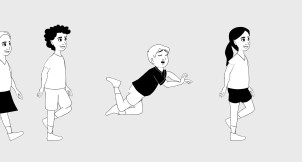Supporting student resiliency
Transform your learning environment by elevating discipline and teaching resilience. Our strategies prioritize brain-building and equipping your students with the skills necessary to regulate themselves. These modules provide a practical, neuro-scientifically appropriate approach for elevating discipline and teaching resilience, creating a more positive and supportive learning environment for your students.
Strategies for educators
These strategies are developmentally appropriate for all students, from pre-K to12th grade, and are applicable for all educators, not just classroom teachers. In these modules, all educators will be able to learn strategies that will allow them to better support the development of student resilience.
Learning
These strategies are intended to supplement strong campus and classroom routines and procedures. By executing these strategies on your campus and in your classrooms, your routines and procedures will become more effective, as students are increasingly able to demonstrate the skills necessary to engage effectively in the learning environment.
Why EDTRee?
Watch why EDTRee was created and how EDTRee can support your approach to building positive student culture and discipline practices.
Unleash the power of brain science
Dr. Tina Payne Bryson is a renowned expert in the field of brain science and child development. She is recognized for her work in integrating cutting-edge neuroscience with practical, evidence-based parenting and teaching strategies. Her work centers around helping parents and educators understand the emotional and behavioral needs of children from a brain-based perspective.
Modules
Take your teaching to the next level with our brain-based learning modules. Our modules are designed to harness the latest research in neuroscience to help you cultivate resilience and elevate discipline in the classroom. By understanding how the brain processes information, where students are developmentally, and how it is affected by emotions, you can create a learning environment that is more effective and empowering for your students.
Our modules offer practical techniques for utilizing brain-based research in the classroom, providing you with the tools you need to make a lasting impact on your students. Sign up today and unlock the full potential of brain-based learning at your campus.

1 Discipline is Teaching

2 Behavior is Communication

3 The 4 S’s – Relationship on the Front Burner

4 Can’t vs. Won’t

5 Reactive vs. Receptive

6 Dialing Down the Intensity

7 Fire and Wire

8 Structure Plus Nurture

9 Consistent, Not Rigid

10 It All Starts With You
The Four Step Approach
These modules are designed with busy educators in mind. You can improve your craft anywhere and at any time. Each video is less than 5 minutes to watch and each module follows a proven-four-step approach:
Introduction
Learn the science behind how the brain works.
See it
Observe the strategy in action through educator and student scenarios.
Name it
Unpack the strategy further to better understand how to execute key actions.
Do it
Based on what’s modeled, practice the strategy to gain confidence.
